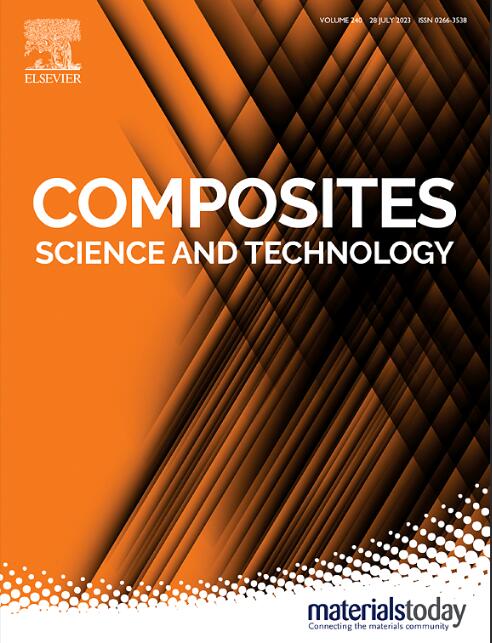Triple-network structured phase change composite based on “rod-brush” CNTs-CFs with high thermal conductivity
IF 8.3
1区 材料科学
Q1 MATERIALS SCIENCE, COMPOSITES
引用次数: 0
Abstract
The thermal management challenge in microelectronic products is a critical issue that must be addressed in the future era of intelligent technology. In this study, a phase change composite (CNCC-10), featuring a triple-encapsulated phase change material network and dual thermal conductive channels, was developed by compounding custom “rod-brush” structured CFs-CNTs (carbon nanotubes were grown on the surface of carbon fiber) filler with n-Docosane, ethylene propylene diene monomer, and metal foam via vacuum impregnation and hot pressing. The resulting material demonstrates remarkable shape stability alongside a high thermal conductivity of 3.15 W⋅m−1⋅K−1. In simulated chip operation tests, CNCC-10 not only delayed the rise in chip operating temperature but also steadily and consistently reduced the chip's working temperature by 12 °C. Under conditions of intense heat release and transient high-energy thermal shocks, CNCC-10 decreased the chip's working temperature by 23.15 °C and 50.1 °C, respectively, addressing the heating challenges under varying conditions. The integration of high thermal conductivity with phase change driven intelligent temperature control enables CNCC-10 to deliver exceptional chip thermal management performance and multi-source drive thermal management capabilities. This study provides a valuable reference for designing multifunctional thermal management materials for applications such as microelectronic devices, and artificial intelligence systems.

求助全文
约1分钟内获得全文
求助全文
来源期刊

Composites Science and Technology
工程技术-材料科学:复合
CiteScore
16.20
自引率
9.90%
发文量
611
审稿时长
33 days
期刊介绍:
Composites Science and Technology publishes refereed original articles on the fundamental and applied science of engineering composites. The focus of this journal is on polymeric matrix composites with reinforcements/fillers ranging from nano- to macro-scale. CSTE encourages manuscripts reporting unique, innovative contributions to the physics, chemistry, materials science and applied mechanics aspects of advanced composites.
Besides traditional fiber reinforced composites, novel composites with significant potential for engineering applications are encouraged.
 求助内容:
求助内容: 应助结果提醒方式:
应助结果提醒方式:


